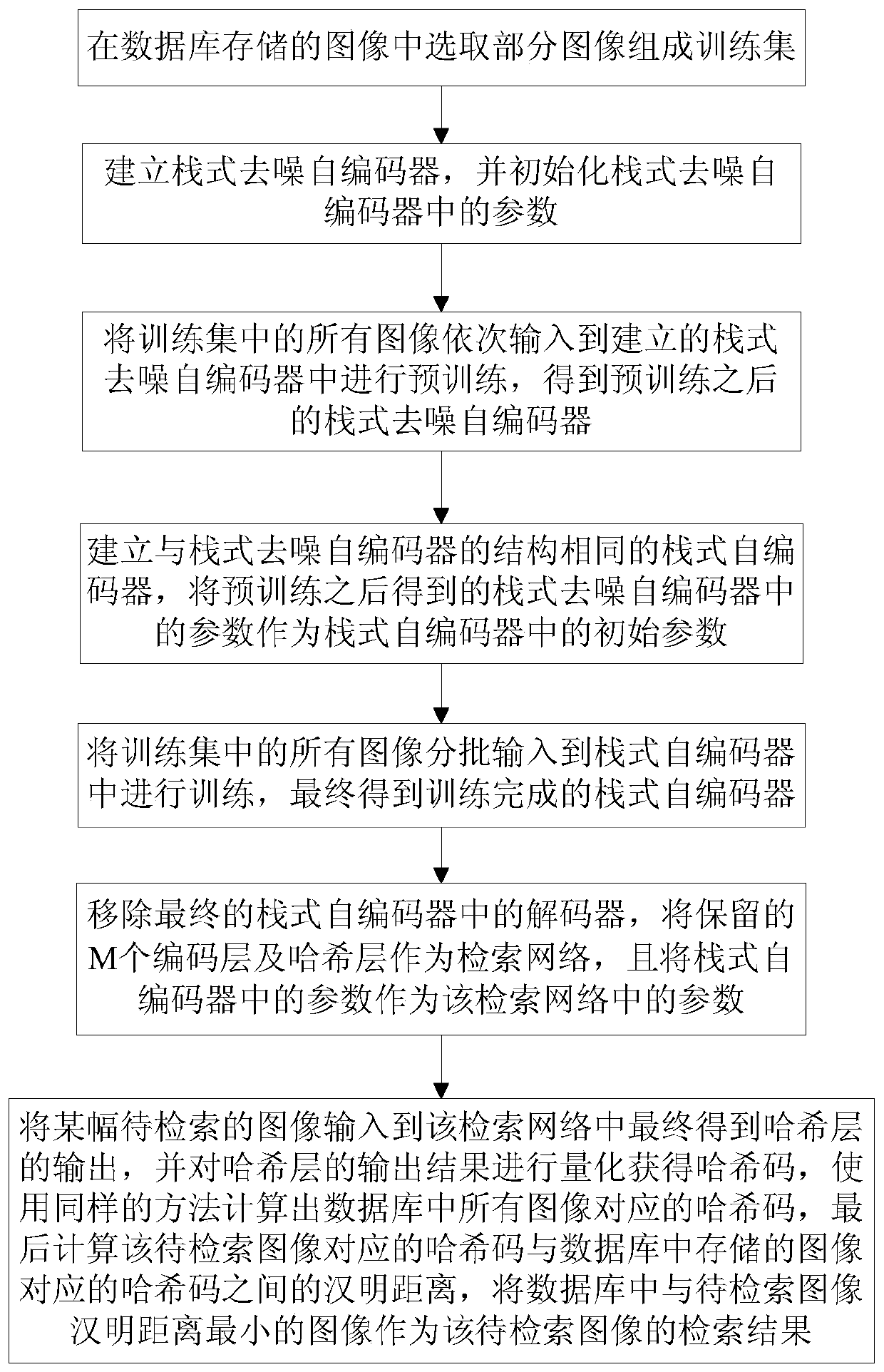Unsupervised hash method based on auto-encoder
A self-encoder, unsupervised technology, applied in neural learning methods, instruments, biological neural network models, etc., can solve problems such as the impact of encoding results
- Summary
- Abstract
- Description
- Claims
- Application Information
AI Technical Summary
Problems solved by technology
Method used
Image
Examples
Embodiment Construction
[0049] The present invention will be further described in detail below in conjunction with the accompanying drawings and embodiments.
[0050] An unsupervised hashing method based on an autoencoder is used to retrieve the image most similar to the image to be retrieved from the images stored in the database, including the following steps:
[0051] Step 1, select some images from the images stored in the database to form a training set;
[0052] Step 2. Establish a stacked denoising autoencoder and initialize the parameters in the stacked denoising autoencoder; the established stacked denoising autoencoder includes sequentially fully connected M encoding layers with n neurons The hash layer of the element and M decoding layers; M encoding layers and hash layers together form an encoder, and M decoding layers form a decoder; M is the optimal positive integer determined through experiments, and n is a preset positive integer ; In this embodiment, M=4;
[0053] Step 3. Input all...
PUM
 Login to View More
Login to View More Abstract
Description
Claims
Application Information
 Login to View More
Login to View More - R&D
- Intellectual Property
- Life Sciences
- Materials
- Tech Scout
- Unparalleled Data Quality
- Higher Quality Content
- 60% Fewer Hallucinations
Browse by: Latest US Patents, China's latest patents, Technical Efficacy Thesaurus, Application Domain, Technology Topic, Popular Technical Reports.
© 2025 PatSnap. All rights reserved.Legal|Privacy policy|Modern Slavery Act Transparency Statement|Sitemap|About US| Contact US: help@patsnap.com



